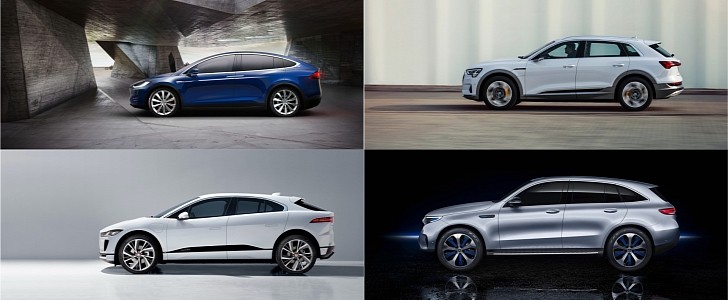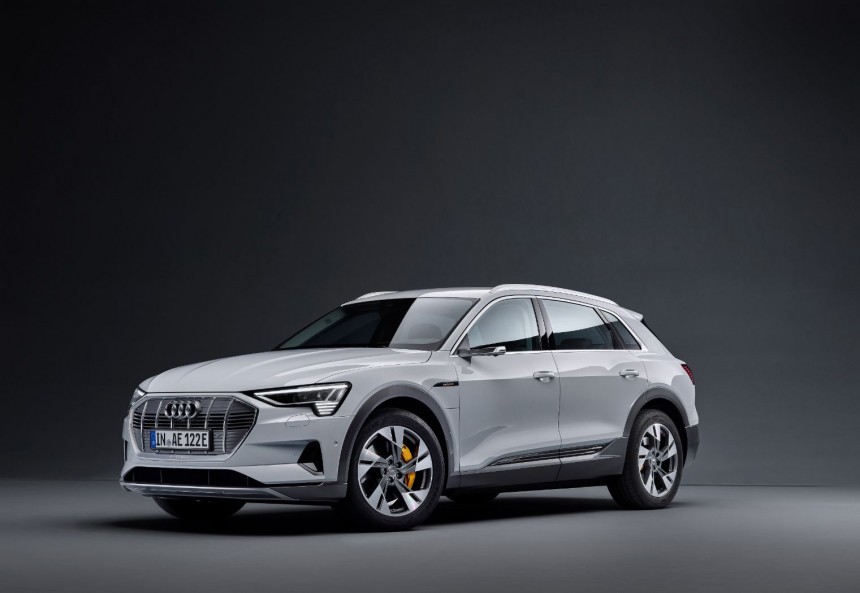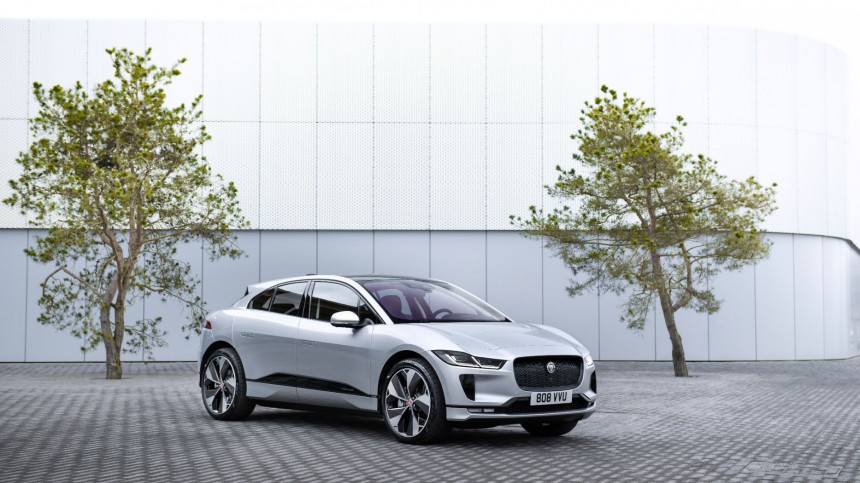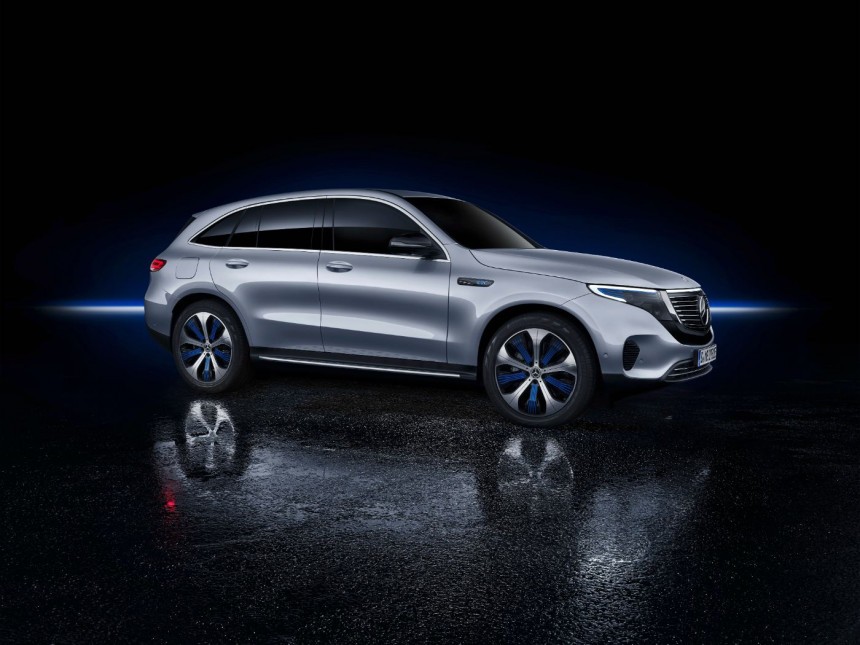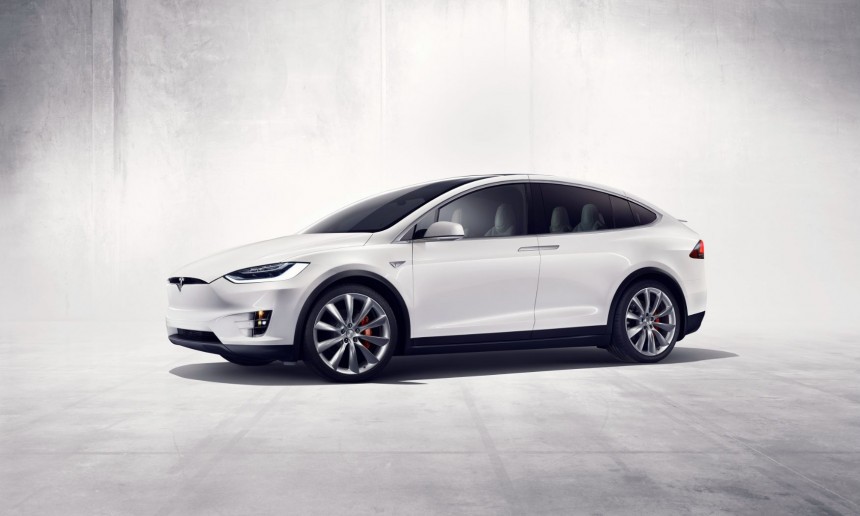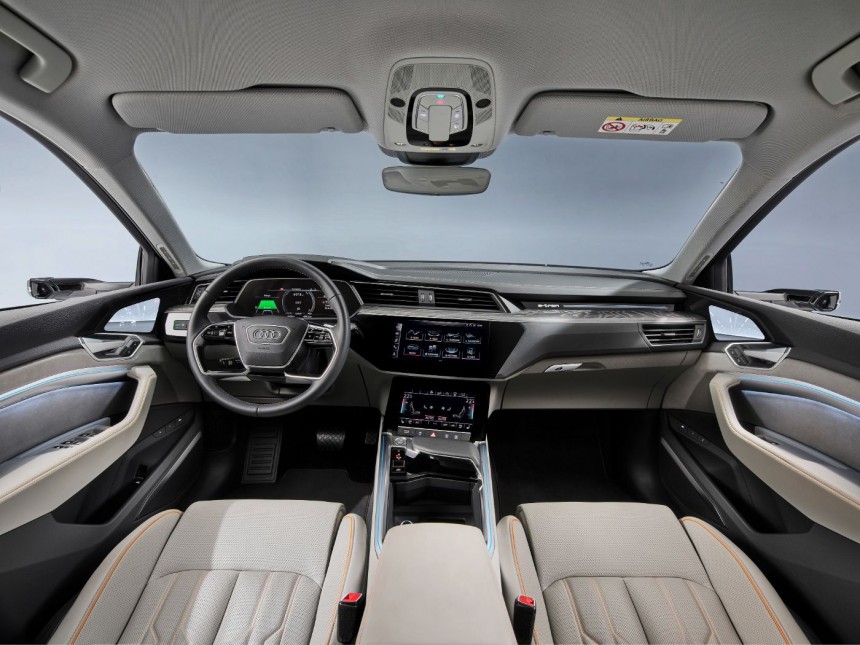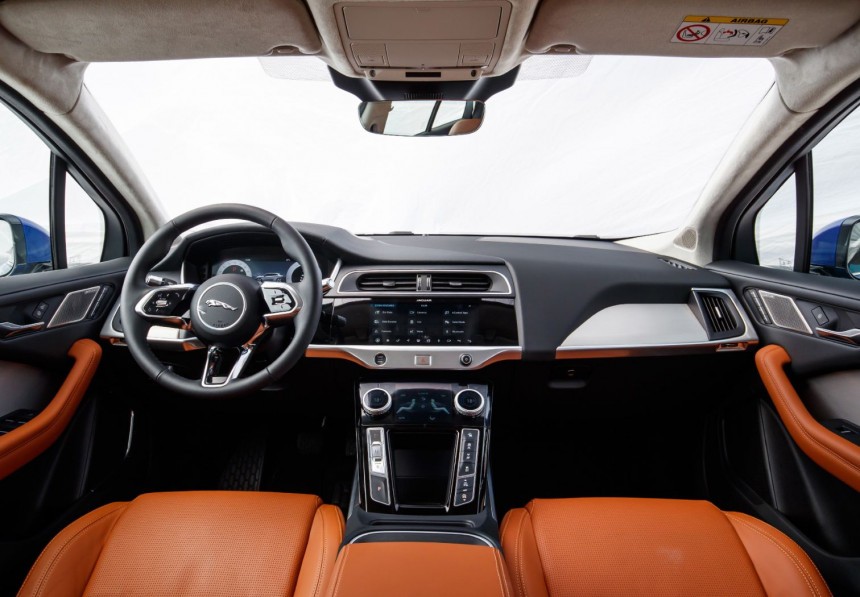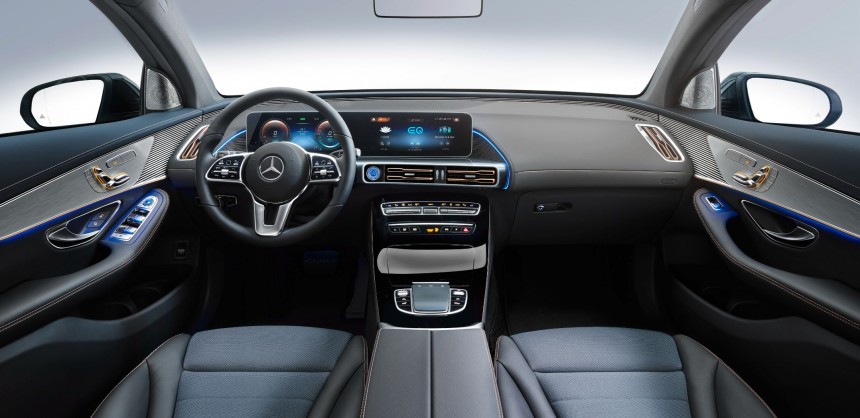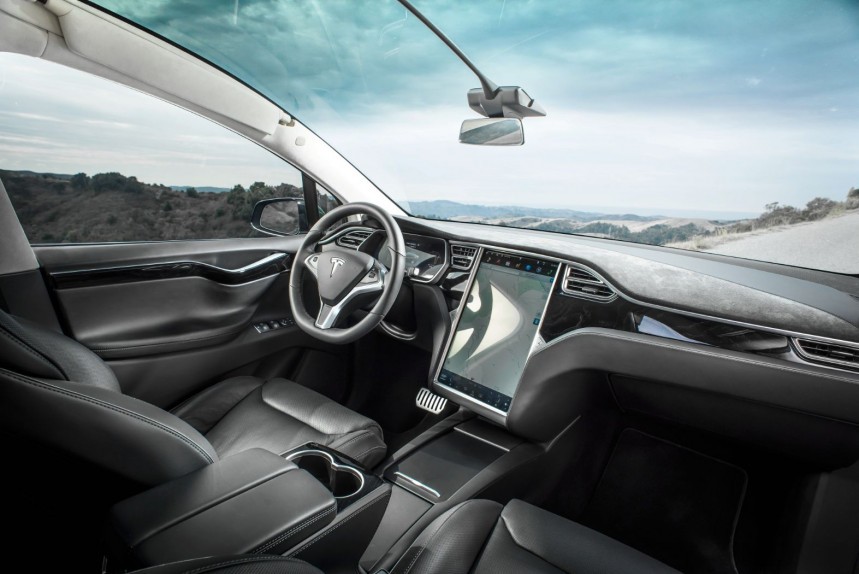The automotive landscape is continuously expanding, with traditional car segments ballooning to include every imaginable type of vehicle.
For example, while a few years ago you could count premium electric SUV using the fingers from one hand, you will probably need at least an abacus sooner than later.
Sure, you can still say that most of the world is in dire need of charging stations, while overall EV driving ranges on a single charge are way smaller than ICE-powered vehicles.
That said, things are obviously improving in both areas, with both carmakers and various civilian companies working around the clock to make electric-powered transportation appear a lot less sci-fi than it did a decade ago.
Heck, ten years ago we only had Tesla and Nissan to choose as somewhat mainstream EV, not of which was offering an electric SUV at the time.
This brings us to the current state of affairs, where traditional carmakers have started to jump on the EV bandwagon like there’s no tomorrow, and most of them are only warming up.
We say this because only two models were built from the onset to be electrically powered from the four-way shootout we have prepared for you today, with the other two being largely based on a traditional architecture used for ICE-powered cars.
Long story short, the newest premium SUV to store its go-fast juice in a battery instead of an old-school reservoir is the Mercedes-Benz EQC, and we decided to pair it with three others that are slightly more experienced, the Tesla Model X, Jaguar I-Pace and the Audi e-tron.
Together, the two motors develop 360 horsepower and 561 Nm (414 lb-ft) of torque, making it the least powerful model in today’s shootout.
Fret not, though, because the e-tron 55 quattro also features a ‘Boost’ function, which amps up the motors to develop up to 408 horsepower and 664 Nm (490 lb-ft) of torque, but only for a limited time.
Those numbers give it a 0-100 kph (62 mph) acceleration time of 6.6 seconds or 5.7 seconds if the Boost mode is activated, onward to a top speed of 200 kph (124 mph).
Unlike the Audi, the Jaguar I-Pace is based on an architecture that’s bespoke for electric vehicles from JLR, which is why it looks unlike any other Jaguar model.
The British model is also using two permanent magnet synchronous motors, one on each axle, which develop a total of 400 horsepower and 696 Nm (512 lb-ft) of torque.
Even boost mode, the I-Pace is therefore good for a 0 to 100 kph (62 mph) acceleration time of just 4.8 seconds, onward to an electronically limited top speed of 200 kph (124 mph).
Just like the Audi, the Mercedes-Benz EQC was not built from the ground up as an electric vehicle, but is actually based on the Mercedes-Benz GLC, which is using the MRA (Modular Rear-wheel-drive Architecture) platform.
This comes with its fair share of pluses and minuses, one of the disadvantages being the lack of a front trunk (or frunk, as Tesla calls it).
Still, it features two asynchronous electric motors, one powering each axle. Together, they develop a maximum output of 408 horsepower and a tire-torturing torque of 760 Nm (561 lb-ft).
These numbers give it a 0 to 100 kph (62 mph) of 5.1 seconds and a top speed electronically limited to 180 kph (112 mph).
The Tesla Model X Long Range features one synchronous permanent magnet electric motor on the front axle and an asynchronous electric motor on the rear one, combining efficiency and performance into a single package.
Tesla doesn’t publish the Model X Long Range total output figures, but we do know that the front motor develops 279 horsepower and 420 Nm (310 lb-ft) of torque, while the rear one is good for 262 horsepower and 335 Nm (247 lb-ft) of torque.
The official 0-100 kph (62 mph) acceleration time is just 4.6 seconds, while the top speed is set at 250 kph (155 mph), making it a lot faster than its rivals even without featuring the ‘Performance’ moniker, which gives it hypercar oomph.
The Audi e-tron 55 quattro features a 95 kWh battery, of which only 86.5 kWh are usable, giving it a range of 436 km (271 miles) according to the WLTP standard. The EPA hasn’t yet calculated the updated model’s range, but the first version, with only 83.6 kWh usable, was rated at 328 km (204 miles) on a single charge.
It can be charged from 0 to a range of 365 km (227 miles) in 9 hours and 15 minutes with the Type 2 charge port and a power of 11 kW AC. Using the CCS port, it can receive up to 155 kW DC power, but Audi doesn’t mention how much it would take to fast charge from 0 to 100 percent.
The Jaguar I-Pace has a 90 kWh battery, of which around 85 kWh are usable, giving it a WLTP range of 470 km (292 miles), while the EPA has rated it at 396 km (246 miles).
Using the Type 2 charge port it can receive up to 11 kW AC power, getting from 0 to 365 km (227 miles) in exactly the same time as the Audi, 9 h 15 m. With the CCS port it can receive up to 104 kW of DC fast charging.
The Mercedes-Benz EQC has a smaller but more efficient battery, with the in-house produced Li-ion battery capacity being 85 kWh but can only use about 80 kWh.
This translates into a WLTP range of 417 km (259 miles), while the EPA has rated it at 354 km (220 miles) on a single charge.
With the type 2 port it can be charged with 7.4 kW AC in 12 h 45 m from 0 to 370 km (230 miles), while the CCS port allows for fast charging with up to 110 kW DC.
The older Tesla Model X in Long Range spec has the largest battery at 100 kWh battery, of which only 95 kWh are usable.
As its name implies, it has the biggest range, with the WLTP rating being 507 km (315 miles), while the EPA has rated it at 523 km (325 miles) on a single charge. It should be noted that Tesla has benefited from a loophole and EPA numbers are not exactly what they seem in this case.
With the Type 2 port it can be charged with 16.5 kW AC in 7 hours flat from 0 to 450 km (280 miles), while the CCS port can receive up to 200 kW DC power if the charging station allows it.
Depending on the market, the Model X Long Range can start at up to 17,000 euros (about $20,000) more than its least expensive rival, which, surprisingly, is the Mercedes-Benz EQC.
To many than may come as a surprise, especially since eagle-eyed owners might notice that the Tesla uses several buttons and knobs from much older Mercedes-Benz models in its interior. Overall, the build quality is severely lacking in the American electric crossover compared to its competitors, while the service network availability is tens of times smaller.
The I-Pace also suffers from a lesser image when it comes to reliability of products wearing the Jaguar badge, while the car's size doesn’t allow for the same interior space as its competitors.
Audi’s e-tron 55 quattro comes close to being the best all-rounded electric SUV in this comparison, but the mediocre performance and higher price compared to both the Jag and the Merc do weigh a lot in this decision.
If we were in the market for the best premium electric SUV with all-wheel-drive currently on the market, taking into account things like starting price, range, performance and comfort, the Mercedes-Benz EQC seems to be the clear winner in this scenario, despite all its shortcomings on paper and the fact that it's not exactly selling like hot cakes.
Sure, you can still say that most of the world is in dire need of charging stations, while overall EV driving ranges on a single charge are way smaller than ICE-powered vehicles.
That said, things are obviously improving in both areas, with both carmakers and various civilian companies working around the clock to make electric-powered transportation appear a lot less sci-fi than it did a decade ago.
Heck, ten years ago we only had Tesla and Nissan to choose as somewhat mainstream EV, not of which was offering an electric SUV at the time.
This brings us to the current state of affairs, where traditional carmakers have started to jump on the EV bandwagon like there’s no tomorrow, and most of them are only warming up.
We say this because only two models were built from the onset to be electrically powered from the four-way shootout we have prepared for you today, with the other two being largely based on a traditional architecture used for ICE-powered cars.
Long story short, the newest premium SUV to store its go-fast juice in a battery instead of an old-school reservoir is the Mercedes-Benz EQC, and we decided to pair it with three others that are slightly more experienced, the Tesla Model X, Jaguar I-Pace and the Audi e-tron.
Output and Performance
The Audi e-tron is based on VW Group’s MLB platform, which was originally conceived for the group’s internal combustion vehicles with longitudinal drivetrains and is closely related to the Audi Q8. Despite that, Audi engineers have managed to squeeze two asynchronous electric motors on the 55 model, which for the subject of this four-way comparison.Together, the two motors develop 360 horsepower and 561 Nm (414 lb-ft) of torque, making it the least powerful model in today’s shootout.
Fret not, though, because the e-tron 55 quattro also features a ‘Boost’ function, which amps up the motors to develop up to 408 horsepower and 664 Nm (490 lb-ft) of torque, but only for a limited time.
Unlike the Audi, the Jaguar I-Pace is based on an architecture that’s bespoke for electric vehicles from JLR, which is why it looks unlike any other Jaguar model.
The British model is also using two permanent magnet synchronous motors, one on each axle, which develop a total of 400 horsepower and 696 Nm (512 lb-ft) of torque.
Just like the Audi, the Mercedes-Benz EQC was not built from the ground up as an electric vehicle, but is actually based on the Mercedes-Benz GLC, which is using the MRA (Modular Rear-wheel-drive Architecture) platform.
This comes with its fair share of pluses and minuses, one of the disadvantages being the lack of a front trunk (or frunk, as Tesla calls it).
These numbers give it a 0 to 100 kph (62 mph) of 5.1 seconds and a top speed electronically limited to 180 kph (112 mph).
The Tesla Model X Long Range features one synchronous permanent magnet electric motor on the front axle and an asynchronous electric motor on the rear one, combining efficiency and performance into a single package.
The official 0-100 kph (62 mph) acceleration time is just 4.6 seconds, while the top speed is set at 250 kph (155 mph), making it a lot faster than its rivals even without featuring the ‘Performance’ moniker, which gives it hypercar oomph.
Battery, Range and Charging Times
This is where things get trickier, with the differences between the four models getting larger or smaller depending on where you live in the world.The Audi e-tron 55 quattro features a 95 kWh battery, of which only 86.5 kWh are usable, giving it a range of 436 km (271 miles) according to the WLTP standard. The EPA hasn’t yet calculated the updated model’s range, but the first version, with only 83.6 kWh usable, was rated at 328 km (204 miles) on a single charge.
The Jaguar I-Pace has a 90 kWh battery, of which around 85 kWh are usable, giving it a WLTP range of 470 km (292 miles), while the EPA has rated it at 396 km (246 miles).
Using the Type 2 charge port it can receive up to 11 kW AC power, getting from 0 to 365 km (227 miles) in exactly the same time as the Audi, 9 h 15 m. With the CCS port it can receive up to 104 kW of DC fast charging.
This translates into a WLTP range of 417 km (259 miles), while the EPA has rated it at 354 km (220 miles) on a single charge.
With the type 2 port it can be charged with 7.4 kW AC in 12 h 45 m from 0 to 370 km (230 miles), while the CCS port allows for fast charging with up to 110 kW DC.
As its name implies, it has the biggest range, with the WLTP rating being 507 km (315 miles), while the EPA has rated it at 523 km (325 miles) on a single charge. It should be noted that Tesla has benefited from a loophole and EPA numbers are not exactly what they seem in this case.
With the Type 2 port it can be charged with 16.5 kW AC in 7 hours flat from 0 to 450 km (280 miles), while the CCS port can receive up to 200 kW DC power if the charging station allows it.
Wrap up
You’d think it would be easier to choose an electric premium SUV just by looking at the numbers, with the Tesla Model X offering more space for passengers and luggage, more seats, better performance and range than any of the three rivals, but all those things also come at a cost.Depending on the market, the Model X Long Range can start at up to 17,000 euros (about $20,000) more than its least expensive rival, which, surprisingly, is the Mercedes-Benz EQC.
To many than may come as a surprise, especially since eagle-eyed owners might notice that the Tesla uses several buttons and knobs from much older Mercedes-Benz models in its interior. Overall, the build quality is severely lacking in the American electric crossover compared to its competitors, while the service network availability is tens of times smaller.
Audi’s e-tron 55 quattro comes close to being the best all-rounded electric SUV in this comparison, but the mediocre performance and higher price compared to both the Jag and the Merc do weigh a lot in this decision.
If we were in the market for the best premium electric SUV with all-wheel-drive currently on the market, taking into account things like starting price, range, performance and comfort, the Mercedes-Benz EQC seems to be the clear winner in this scenario, despite all its shortcomings on paper and the fact that it's not exactly selling like hot cakes.
